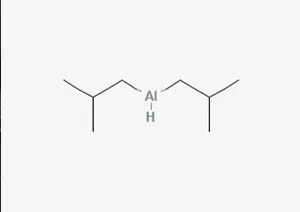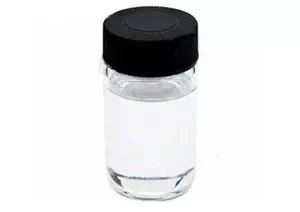In the vast field of organic chemistry, aluminium diisobutyl hydride holds its unique position and characteristics, and it is also well-known as Dibal.
In terms of appearance, aluminium diisobutyl hydride appears as a colorless liquid. Its relative molecular mass was precisely determined to be 122.22. This value is of great significance for studying its chemical properties and the stoichiometric relationships when participating in various chemical reactions.
In terms of density, at an environment of 25℃, its relative density is 0.789. This physical property makes it exhibit specific behavioral manifestations when mixed with other substances or subjected to separation operations. Its melting point reaches -47℃, which means that it will change from a solid state to a liquid state in a relatively low temperature environment. Such a low melting point characteristic also reflects some characteristics of its intermolecular forces. Its boiling point is 140℃ under a pressure of 0.533×10³Pa, and its viscosity is 18.0mPa·s at 25℃. These physical parameters jointly outline the variation law of its physical state under different temperatures, pressures and other conditions.
It is worth mentioning that aluminum diisobutyl hydride undergoes an extremely vigorous reaction with water, and the products of the reaction are hydrogen and isobutane. This reaction characteristic determines that it must be strictly avoided from coming into contact with water during storage and use; otherwise, dangerous situations may occur. In addition, tetrahydrofuran is not suitable as a solvent for diacetylenols. The reason is that when the two meet, a reaction occurs, and a coordination compound is formed. This is a key point that requires special attention in related chemical experiments and chemical production scenarios.
Like the vast majority of organoaluminium compounds, the actual structure of aluminium diisobutyl hydride is far more complex than what is merely shown through its empirical formula. Through a variety of advanced technical means (it should be noted here that these techniques do not include X-ray crystallography), researchers found that the compound exists in the form of dimers and trimers. Among these aggregates, the aluminum centers with tetrahedral structures share bridging hydride ligands, thus constituting their unique microstructure morphology. Due to the relatively small volume and strong alkalinity of hydrides, they are more favored in the structural formation process compared to alkyl bridging, and thus are more likely to form this aggregated state structure dominated by hydride bridging.
There are specific feasible methods for the preparation of aluminium diisobutyl hydride. It can be obtained by heating triisobutyl aluminum, which itself is a dimeric structure substance. During the heating process, a β -hydride elimination reaction is induced, and its chemical reaction equation is: (i-Bu ₃Al)₂ → (i-Bu ₂AlH)₂ + 2(CH₃)₂C=CH₂.
In the field of commercial circulation, although aluminum diisobutyl hydride itself can be purchased as a colorless liquid, in actual situations, it is more common to buy and distribute it in the form of solutions of organic solvents (such as toluene or hexane), which is often more convenient for storage, transportation and subsequent usage operations, etc.




